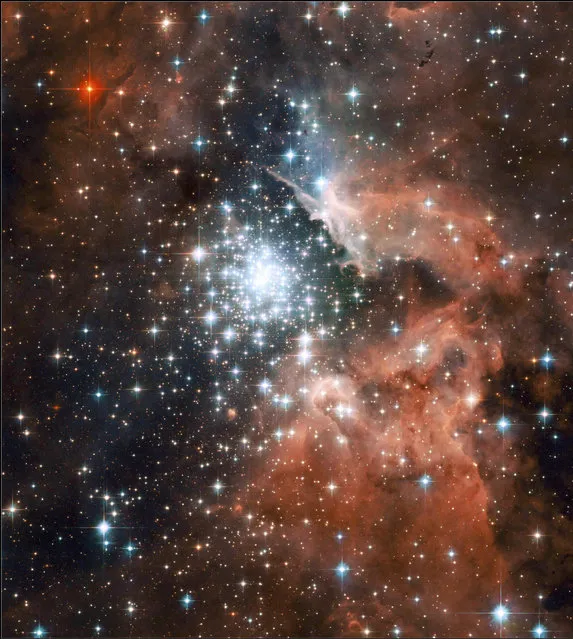
An image shows a giant star-forming nebula with massive young stellar clusters. (Photo by Reuters/NASA/ESA/Hubble Heritage Team)
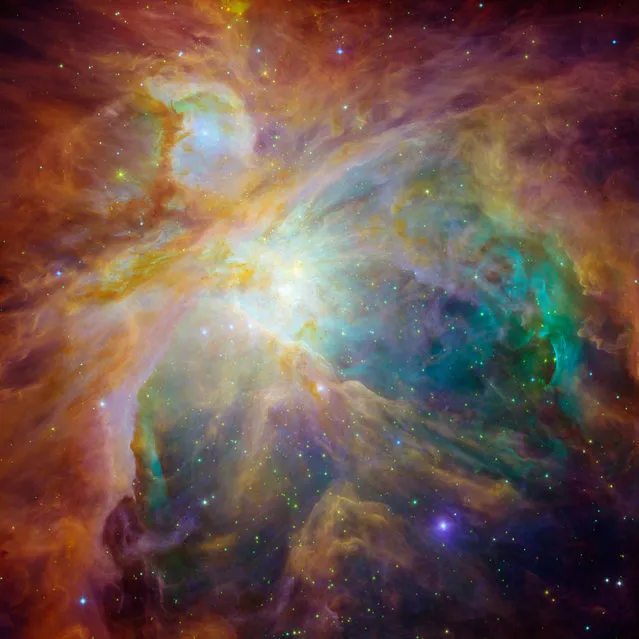
An image of the Orion nebula shows four monstrously massive stars at the center of the cloud. (Photo by T. Megeath/M. Robberto/Reuters/NASA/JPL-Caltech/University of Toledo/STScI)
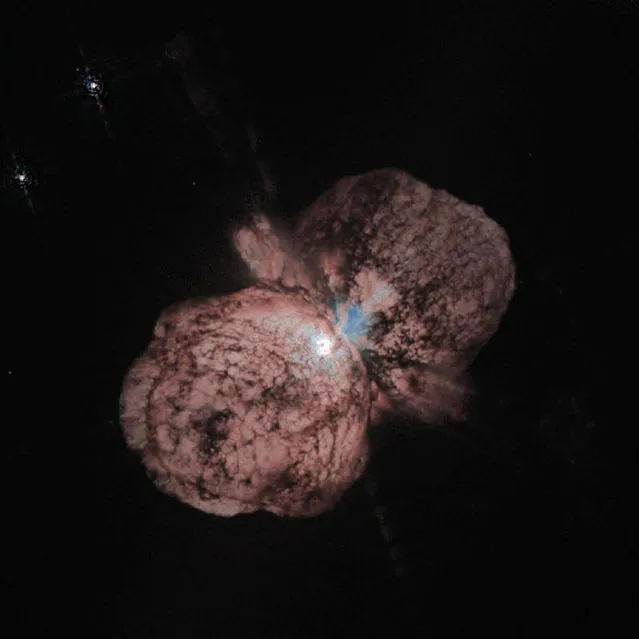
A massive star known as Eta Carinae in our Milky Way galaxy that experts believe might explode in a supernova in the astronomically near future. (Photo by Reuters/NASA)
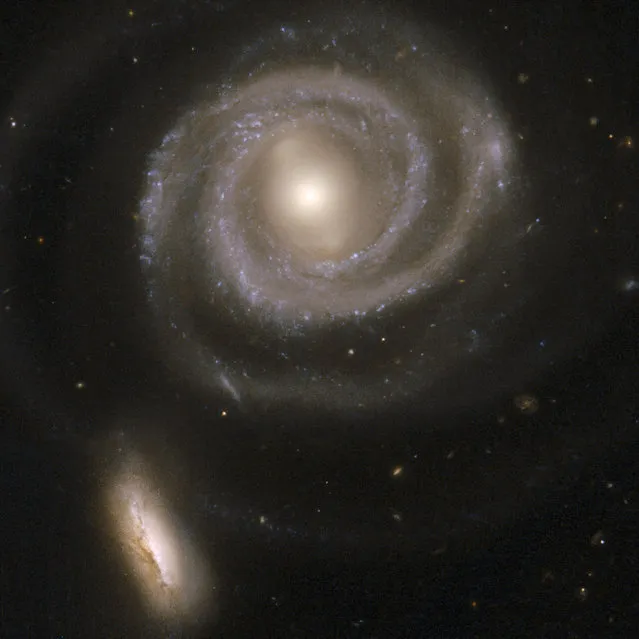
A pair of interacting galaxies consisting of NGC 5754, the large spiral on the right, and NGC 5752, the smaller companion in the bottom left. NGC 5754's internal structure has hardly been disturbed by the interaction. The outer structure does exhibit tidal features, as does the symmetry of the inner spiral pattern and the kinked arms just beyond its inner ring. In contrast, NGC 5752 has undergone a starburst episode, with a rich population of massive and luminous star clusters clumping around the core and intertwined with intricate dust lanes. The contrasting reactions of the two galaxies to their interaction are due to their differing masses and sizes. (Photo by W. Keel/Reuters/NASA/ESA/Hubble Heritage Team/Hubble Collaboration/University of Alabama)
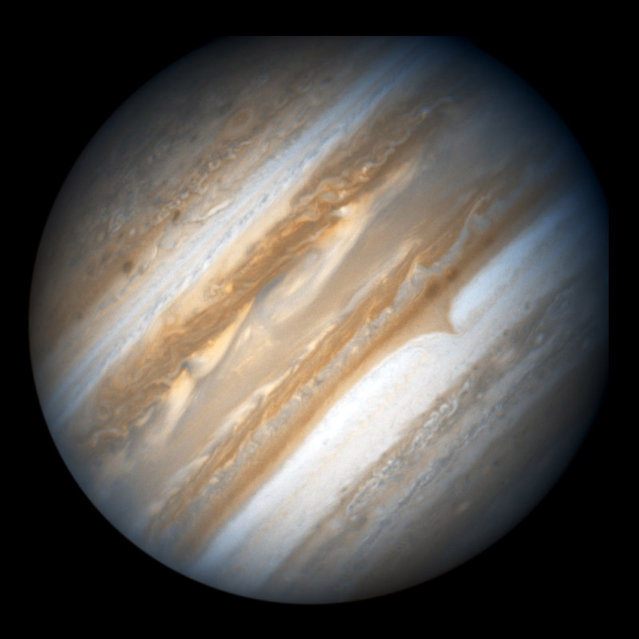
An image of Jupiter shows the planet's trademark belts and zones of high- and low-pressure regions in crisp detail. Circular convection cells can be seen at high northern and southern latitudes. (Photo by Reuters/NASA/ESA/Hubble Heritage Team)
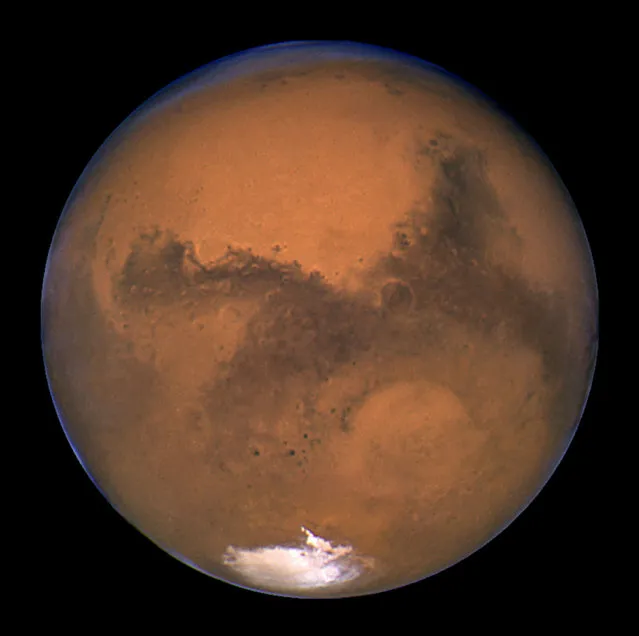
A view of Mars made from a series of exposures taken over a fify-two minute period. (Photo by J. Bell/M. Wolff/Reuters/NASA)
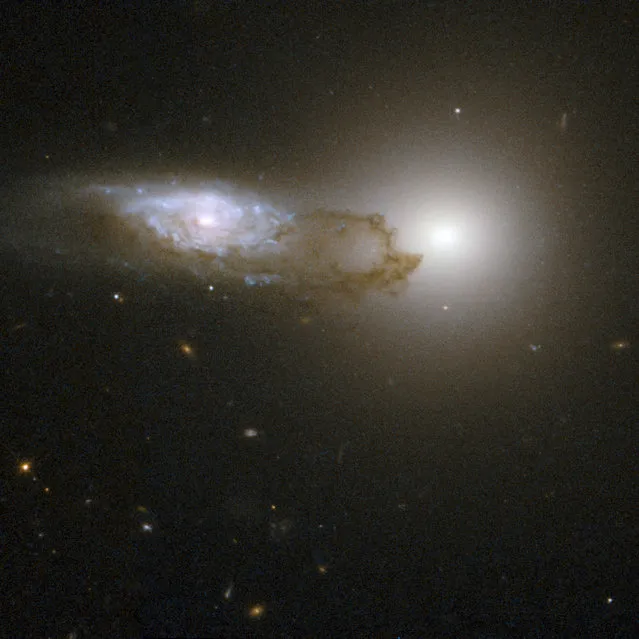
A view of AM 1316-241, made up of two interacting galaxies - a spiral galaxy in front of an elliptical galaxy. The starlight from the background galaxy is partially obscured by the bands and filaments of dust associated with the foreground spiral galaxy. (Photo by W. Keel/Reuters/NASA/ESA/Hubble Heritage Team/Hubble Collaboration/University of Alabama)
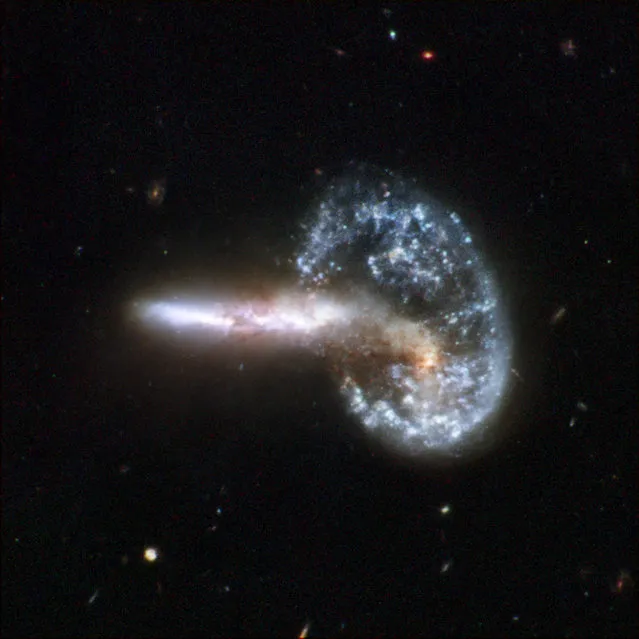
The staggering aftermath of an encounter between two galaxies, resulting in a ring-shaped galaxy and a long-tailed companion. The collision between the two parent galaxies produced a shockwave effect that first drew matter into the center and then caused it to propagate outwards in a ring. (Photo by Reuters/NASA/ESA)
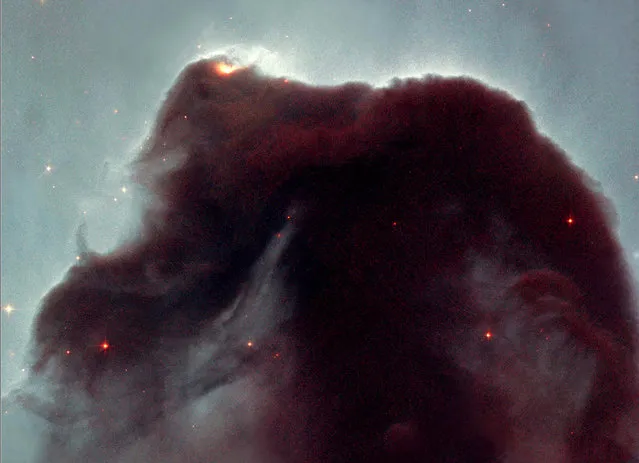
The Hubble telescope took a close-up look at this heavenly icon, revealing the cloud's intricate structure. This detailed view of the horse's head was released April 24, 2001 to celebrate the orbiting observatory's eleventh anniversary. (Photo by Reuters/NASA)
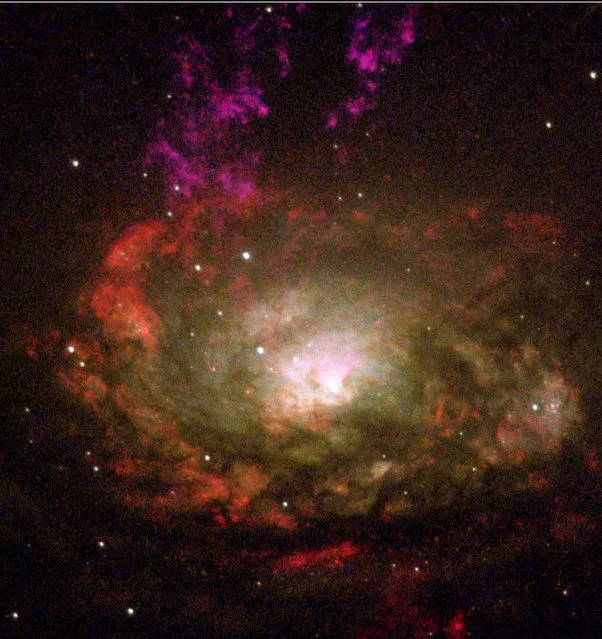
An image of a type 2 Seyfert galaxy that lies 13 million light-years away in the southern constellation Circinus. The galaxy has a compact center and is believed to contain a massive black hole. (Photo by Reuters/NASA)
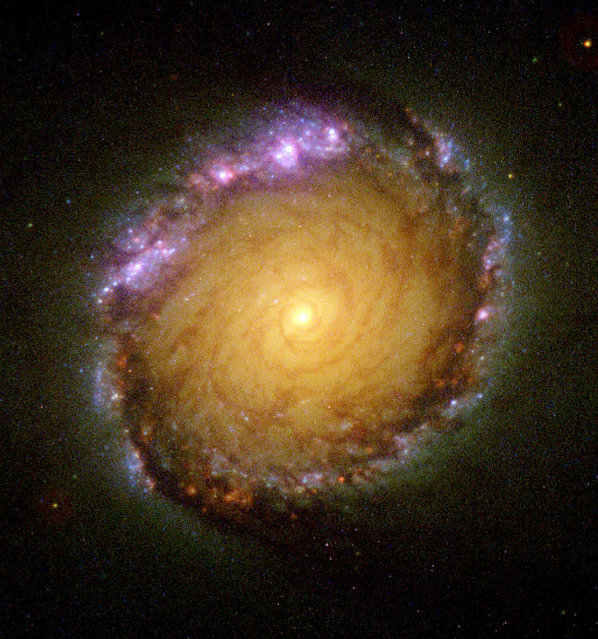
An image of galaxy NGC 1512 showing a monster area - 2,400 light-years across – filled with clusters of infant stars. (Photo by Reuters/NASA)
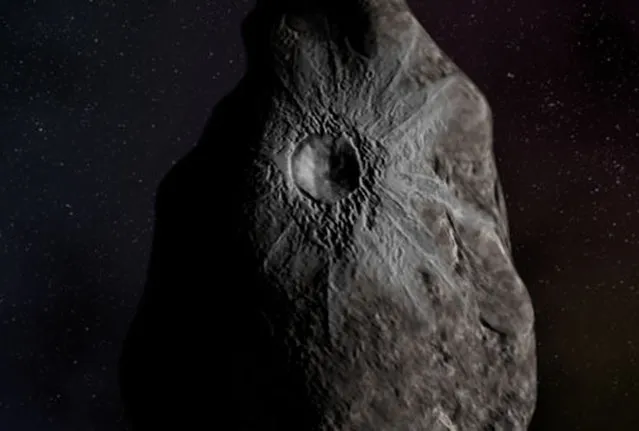
Image taken from Hubble space telescope shows a crater on an object called 8405 Asbolus, a 48 mile-wide chuck of ice and dust that lies between Saturn and Uranus. Astronomers using the telescope found what looks like a fresh water crater less than 10 million years old, exposing underlying ice that is apparently unlike any yet seen. (Photo by Reuters/NASA)
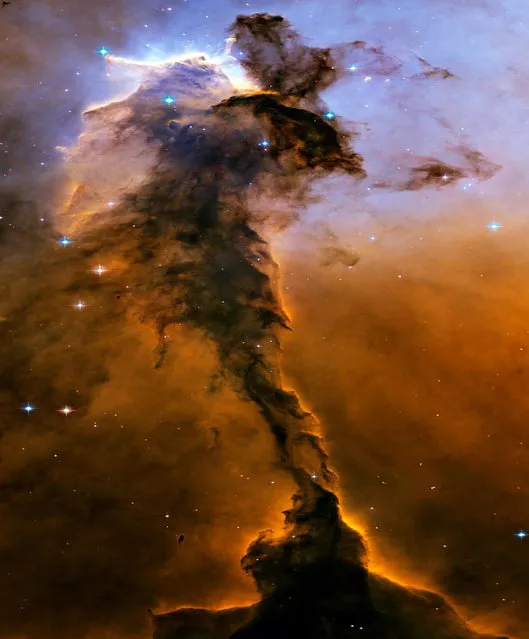
A new view of the Eagle Nebula, one of the two largest and sharpest images Hubble Space Telescope has ever taken. (Photo by Reuters/NASA)
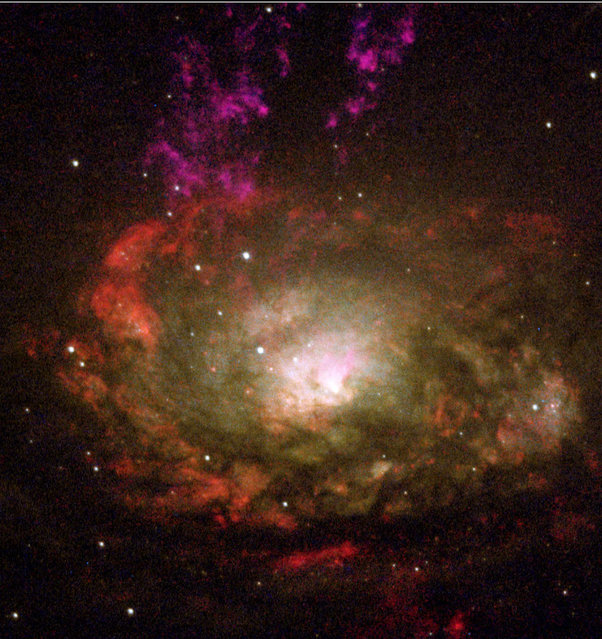
Resembling a swirling witch's cauldron of glowing vapors, the black hole-powered core of a nearby active galaxy, 13 million light-years away in the southern constellation Circinus. (Photo by Reuters/NASA)
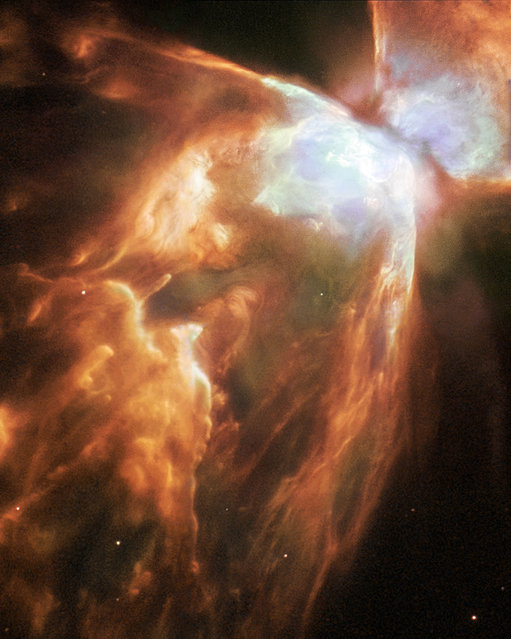
The Bug Nebula showing impressive walls of compressed gas, laced with trailing strands and bubbling outflows. At the heart of the turmoil is one of the hottest stars known. Despite a sizzling temperature of at least 250,000 degrees C, the star itself has never been seen, as it is hidden by the blanket of dust and shines most brightly in the ultraviolet, making it hard to observe. (Photo by Albert Zijlstra/Reuters/NASA/ESA)
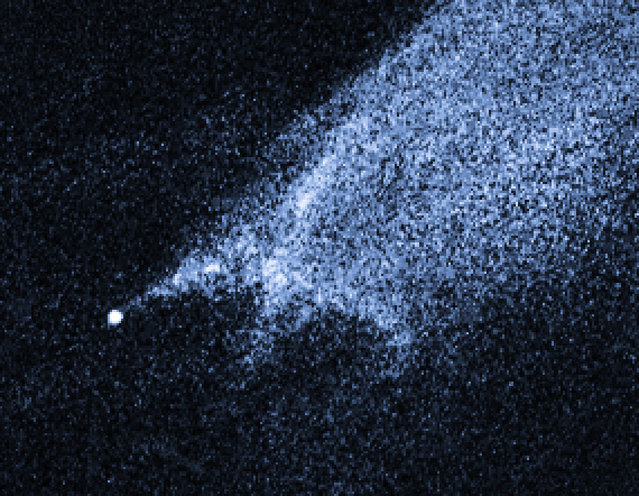
A bizarre comet-like X-pattern of filamentary structures circling about 90 million miles from Earth. It is believed the object was created by the collision of two asteroids. (Photo by Reuters/NASA/ESA)
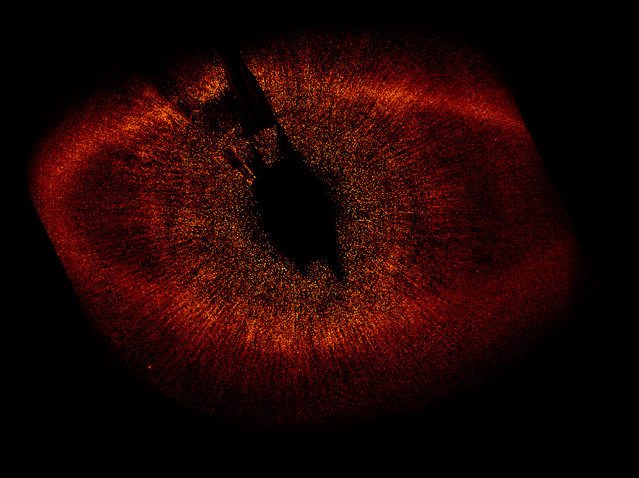
The first visible-light snapshot of a planet circling another star. Estimated to be no more than three times Jupiter's mass the planet, called Fomalhaut b, orbits the bright southern star Fomalhaut, located 25 light-years away. (Photo by Reuters/NASA/ESA)
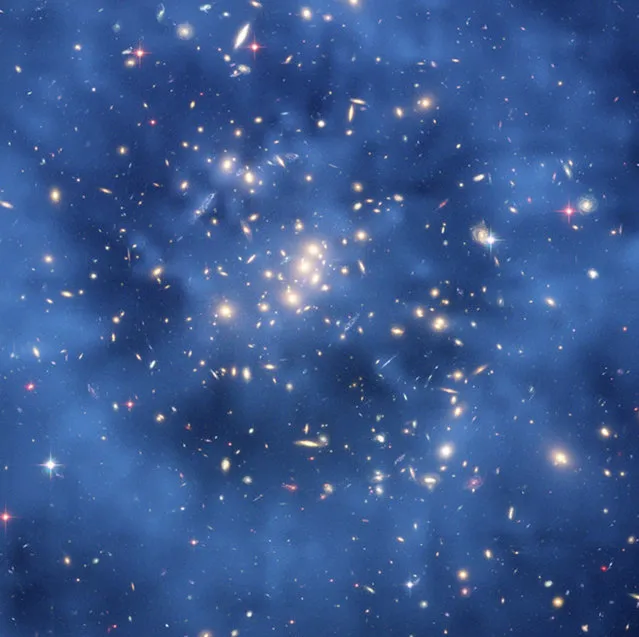
An image of a ghostly ring of dark matter in a galaxy cluster designated Cl 0024 17. Astronomers call the ring one of the strongest pieces of evidence to date for the existence of dark matter and suggest the ring was produced from a collision between two gigantic clusters. (Photo by M. J. Jee/H. Ford/Reuters/NASA/ESA/Johns Hopkins University)
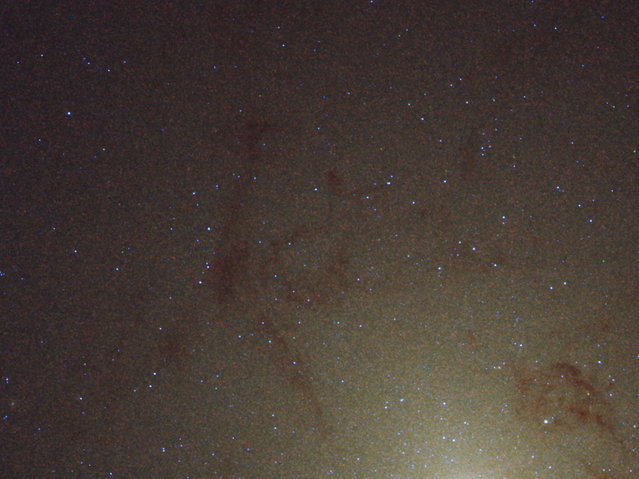
A large rare population of hot, bright stars inside the hub of the neighboring Andromeda galaxy. (Photo by Reuters/NASA)
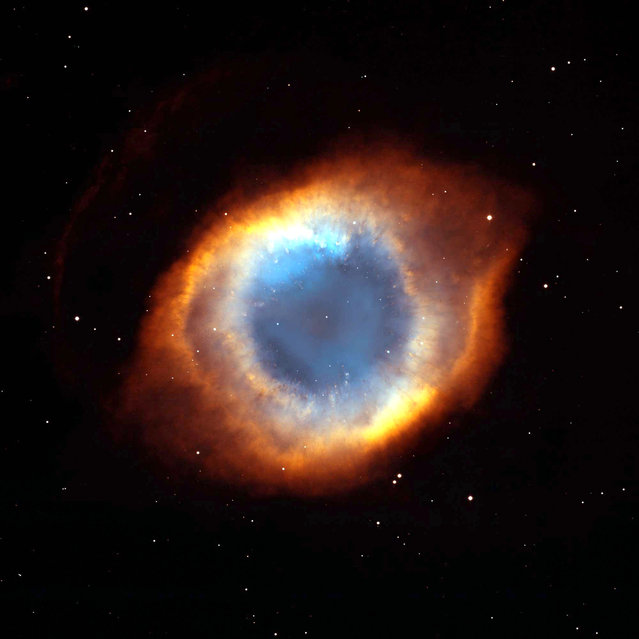
A coil-shaped Helix Nebula showing a fine web of filamentary “bicycle-spoke” features embedded in the colorful red and blue ring of gas. At 650 light-years away, the Helix is one of the nearest planetary nebulae to Earth. A planetary nebula is the glowing gas around a dying, Sun-like star. (Photo by Reuters/NASA)
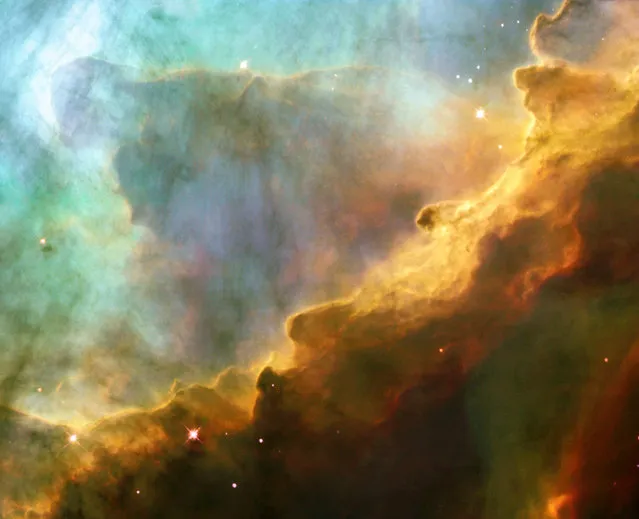
A small region within M17, a hotbed of star formation also known as the Omega or Swan Nebula, located about 5,500 light-years from Earth in the constellation Sagittarius. (Photo by J. Hester/Reuters/NASA/ESA)
22 Oct 2014 14:01:00,
post received
0 comments
